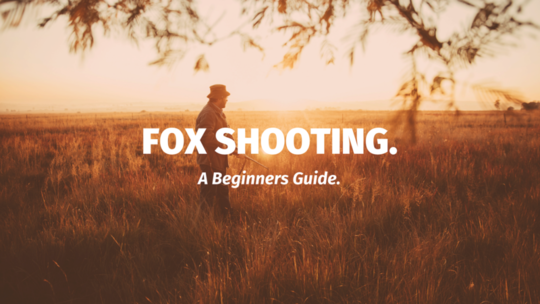
Savage Arms: Long-Range Shooting Specialists
News Events
Create a FREE business profile and join our directory to showcase your services to thousands.
Create my profile now!
Its that time of year again - the perfect opportunity to go out fox shooting - with Winter nights closing in early, you’ll get a cold breeze keeping away any indication of your scent, and darkness hiding your visual presence. This time of year is also when foxes can do the most damage to livestock due to the cubs being big enough to go hunting, combined with a general lack of food out in the wild.
The beauty of fox shooting is that you don’t need the high-end kit to get started; when I first started fox shooting it was with my father, a lamp and a Beretta AL391 Teknys 12-gauge shotgun with Express BB cartridges. The only other tool I required was a good fox caller.
Since then, I’ve moved onto rifles allowing me to shoot foxes at longer ranges; my two favourite calibre rifles that I use for foxes is the Hornady .17 HMR and the .243 Winchester with Remington 75-grain AccuTip, but other calibres are just as good.
The .22 LR and the .17 HMR are really good starting rifles as both of these rimfires are deadly accurate and get the job done up to 60-80 yards away, depending on specifications. The .17 HMR is a flat shooting round whereas the .22 LR is a heavier bullet with more of an arc trajectory. The calibre I use mainly on with foxes is the .243 Winchester AccuTip - it’s a hard-hitting bullet with a good range especially if you can't quite call the fox in close enough for the rimfire. Other calibres such as .222, .223, .22-250, .204 and .243 are very popular for fox control with individual preferences.
There are plenty of choices when it comes to choosing a fox caller, all different shapes and sounds. In fact, you can never have too many and you might find one caller will work wonders one night, but then a different one will work better another night.
This is where electronic callers come into their own. Fairly new on the market, you’ll get one machine with multiple callers built in for you to choose from. Even better, they won’t just stop at fox calling, you’re able to download a huge variety of sounds for bringing in crows, magpie and so much more.
The two main fox callers I use are the FoxPro Caller and the Best Fox Call. Both of which are mouth callers that resemble a rabbit in distress, I do also use the ICOtec GC350 electronic caller and remote which comes with many different sounds (Cottontail Distress, Jack Rabbit Distress, Mouse Voles, Red Fox Distress etc), when working with one of my good friends Kevin Rees. If you’re looking to save yourself the money, a great trick is to use some polystyrene and run it down a slightly wet lamp face it. This actually gives a similar sound of a rabbit in distress.
The lamp we use at the moment is a CluLite PLR 500: a nice compact model with a white LED 500m focus beam and a lithium battery built into the lamp handle. It comes with the option to put a red lamp filter attachment clip on the front. This is a big difference to what I was using when I started fox shooting, carrying around a Lightforce lamp plugged into a big heavy battery pack that went on your back - although many people still use that method.
You can also use a TR67 torch and attach to your scope ordered from Ludicrous-Lumens. The TR67 illuminator has a 25mm tube size for easier mounting and runs on a signal or dual 18650 batteries with included body extension tube. It also has a range of LED options by changing the pill inside the lamps head. Your colour options are red, green and 3 types of white. It also has the option of a 2000MW IR 850nm to add on and transform your range using the night vision.
(Please Note, the products used in this review are only what we prefer to use out in the field, but there are many different good-quality options for lamps on the market.)
Night Vision.
There are many different types of night vision out there and it’s a really great piece of kit to have; a handy investment for those foxes that have been lamped before or are ‘Lamp-shy’.
They don’t have to be used just for foxes and are just as effective on rabbits, rats etc.
You can get night vision that adds onto your scope, in the kit you’ll receive a camera that slots onto the eyepiece of the scope, a screen to mount on top of the scope, a battery pack, and then the IR torch that allows the camera to function in the dark. Another form of night vision is buying a scope that’s directly compatible with night mode. It’ll sit on your rifle just like any other scope, but with an IR torch on the side to create a nice compact set up. This option just makes setting up in the night a whole lot quicker.
CZ American – 17HMR
Wicked Lights IR combo
CZ American – 22LR
SAK Moderator
Written by: Julian Morris and Kevin Rees,
Kevin Rees on the left Julian Morris on the right

